By Sharon Grigsby
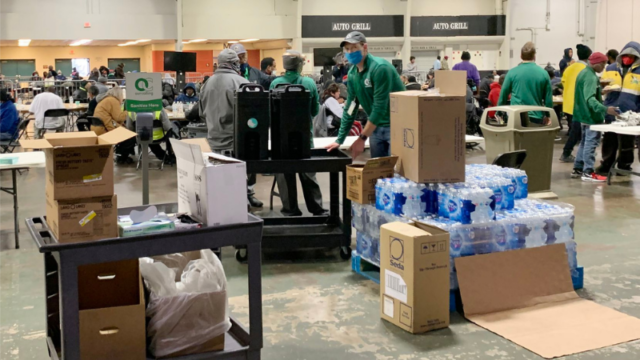
As February’s treacherous weather descended, a gentleman in his 70s, coping with cancer and confined to a wheelchair, was without shelter because a dispute with family members cost him his home.
A much younger man, sucked into a spiral of tragedy that began when he lost his wife and then his livelihood, was also out in the cold with no place to go.
Same for the middle-aged woman, who insists on covering up her heavy burdens with an always-cheerful countenance. She works a day shift at McDonald’s but can’t find an affordable place to call home.
These are three of the 1,090 unsheltered women and men who didn’t die on the streets as ice, sleet and snow began encasing North Texas in the early hours of Feb. 3.
They survived because of a massive effort by a relatively small number of good souls, most of whose work was invisible to those of us tucked in our cozy homes.
Forget our sports teams, flocks of construction cranes or even the State Fair. The fine people who spent their “snow days” making the city’s temporary shelter within Fair Park’s Automobile Building a refuge for our unhoused neighbors are a great example of why I’m so proud to call Dallas my hometown.
I don’t have the space to list each of you by name, but you know who you are.
How this team pulled off its rescue mission and how that fits into the larger fight to house the unsheltered is worth a closer look — especially as the call for volunteers goes out for the Feb. 24 point-in-time count in Dallas and Collin counties.
This is the annual census conducted in communities nationwide of people experiencing homelessness. The information gathered is vital, plus participants get an unvarnished understanding of the individual faces and stories behind this vexing issue.
/cloudfront-us-east-1.images.arcpublishing.com/dmn/HZWH3JF36VCJZE7QUOXMV54LNU.jpg)
Joli Robinson, president and CEO of the Metro Dallas Homeless Alliance, hardly had a moment for our interview amid working on logistics for the count and analyzing what her team learned from the Fair Park shelter effort.
She remains in awe over the sheer kindness of people who risked their own safety to assist in any way possible — people who “showed up day in and day out, driving over ice to show compassion to our unhoused brothers and sisters.”
Robinson also holds deep sadness to have seen so many people — disproportionately, people of color — who had no other option but to take refuge in a cavernous makeshift shelter.
“It tells me we still have lots of work to do,” she said. “What we saw is indicative of the social systems and fabric not adequately or efficiently taking care of folks before they get to this place.”
It’s not just the city’s homeless response system, it’s about our need for affordable housing, for permanent supportive housing, for jobs for the previously incarcerated, and mental health and anti-addiction services for those who are sometimes hardest to reach.
Much of the media’s spotlight during the storm fell on the OurCalling nonprofit as these easy-to-spot green-shirted staffers did an outstanding job with some of the most visible shelter responsibilities.
But many other groups had their own crucial oars to row and each did an equally heroic job — at no small expense to their always tight budget: The Stewpot, Union Gospel Mission, Austin Street Center, The Salvation Army, The Bridge and Family Gateway.
By all accounts, the city’s Office of Homeless Solutions, led by Christine Crossley, also rose to the occasion. City Hall carried a lot of the load, including COVID-19 testing, security, janitorial services and securing cots, blankets and water.
The North Texas Behavioral Health Authority mobilized on-site for people who might be experiencing a mental health crisis. Dallas Fire-Rescue made sure medical help was available.
And those shelters that provide services year-round continued their on-site operations while also pitching in where they could at Fair Park.
Brenda Snitzer, executive director of The Stewpot, served as central dispatch for shelter and church minibuses and vans as she spent most of the storm matching homeless individuals with drivers. She fielded calls across the city regarding people stranded at libraries, the convention center, outside fast-food joints, the VA medical center and Social Security offices.
“It takes everybody to get the job done,” Snitzer told me. “All of us — with different gifts and different strengths.”
Oak Lawn United Methodist Church, where sheltering the homeless is a passion for Senior Pastor Rachel Baughman and her congregation, served as a transportation hub.
As the ice became worse, Dallas police officers and Fire-Rescue responders helped out in a big way. For part of the storm, Kessler Park United Methodist Senior Pastor Eric Folkerth and church members picked up those in need in their own van.
At one point, Snitzer and her husband joined the street search and, in Deep Ellum, they spotted a man in his 50s, clad only in shorts and a T-shirt, who was using a walker as he walked on the street. The man fell just before the couple reached him and clearly needed an ambulance.
As they waited for the emergency vehicle, he explained that he had just been released from jail and had no clothes other than those he was wearing at the time of his arrest.
At Fair Park, Robinson worked to remember the names of the unsheltered guests and say a warm hello as she and other MDHA staff collected data on individuals, some of whom had never engaged with street outreach to get help.
“Entering them into the system helps us move them forward quicker to get them rehoused,” Robinson told me.
Peter Brodsky, MDHA board chair when the deadly February 2021 storm hit, told me that the city-community response was immeasurably better this year, thanks to increased trust and communication.
Every Monday, MDHA leads an executive council meeting that includes Crossley as well as major shelters and providers. Over the past year, the team has also created its official inclement weather policy.
“This time we were better planned out and everything was better executed,” Brodsky said. “We’ll learn even more for next time, but already there was much less scrambling.”
MDHA’s progress and Robinson’s hiring prove up Brodsky’s theory: Dallas needed a stronger conductor orchestrating the symphony of different players.
/cloudfront-us-east-1.images.arcpublishing.com/dmn/LCQK4B6KFBB3ZHRJSBPPEUXPN4.jpg)
As the storm forecast began to emerge, the city, MDHA and the collaborative of providers left no detail to chance. How to cordon off the women’s section from the men’s. How to make sure people with mobility challenges had easy access to bathrooms. Where to pass out blankets and store toilet paper.
“A lot of it is not glamorous or enticing to the media,” Robinson said. “It’s invisible, especially as we try to do things in a way that provides our guests dignity and privacy.”
The Stewpot’s Snitzer said the stories shared at the temporary shelter reminded her of how many people simply don’t have the family, resources or support that the rest of us would if we faced the crisis of losing a home or job or suffered a mental illness.
“The sad truth is there are so many people across the Dallas-Fort Worth area that don’t have anybody,” she said. “They don’t have a safety net. If they aren’t prepared, and they have a major life issue, they end up on the streets.”
At least they have this small but mighty army of advocates willing to try to help them.
The Fair Park shelter didn’t close until Tuesday morning, still serving well after most of us had forgotten about the storm.
Robinson was among those at the door wishing the departing guests well and even celebrating with those who were moving on to services they were able to connect with during their stay.
“To see the experience of homelessness — so many people — in real time was an affirmation of what’s at stake and who is at stake if our system doesn’t work effectively,” she said.
To learn more or to register to volunteer for the 2022 point-in-time count throughout Dallas and Collin counties, which begins at 5 p.m. Feb. 24, go to mdhadallas.org/homeless-pit-count.



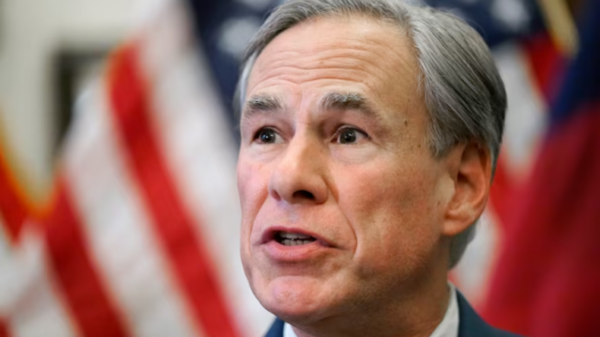

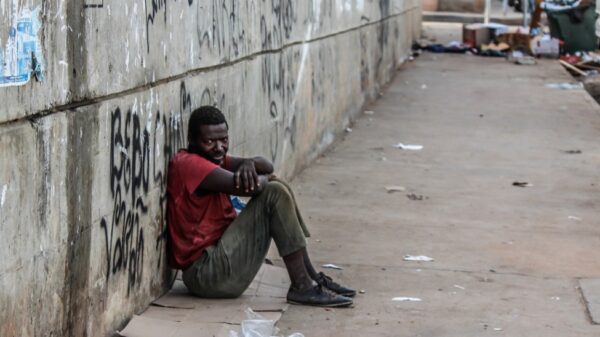
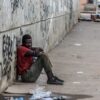
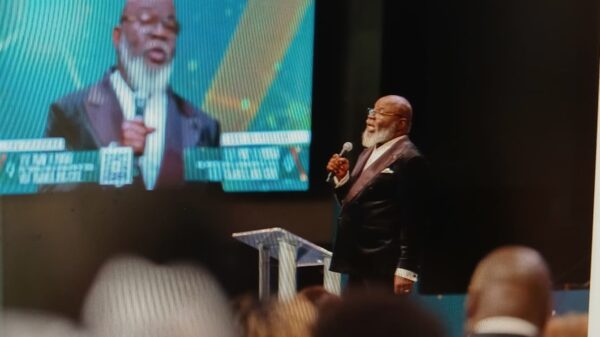

You must be logged in to post a comment Login